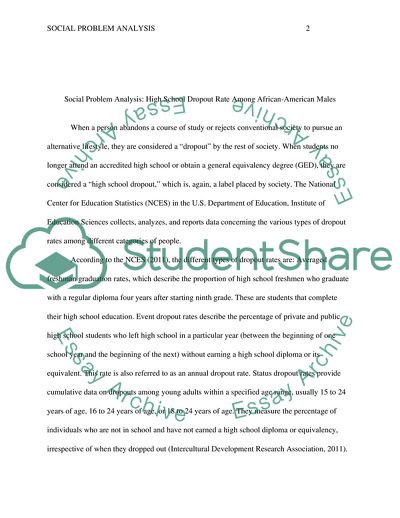Cite this document
(The Various Types of Dropout Rates Among Different Categories of People Essay Example | Topics and Well Written Essays - 1750 words, n.d.)
The Various Types of Dropout Rates Among Different Categories of People Essay Example | Topics and Well Written Essays - 1750 words. https://studentshare.org/sociology/1758686-social-problem-analysis-high-school-dropout-rate-among-african-american-males
The Various Types of Dropout Rates Among Different Categories of People Essay Example | Topics and Well Written Essays - 1750 words. https://studentshare.org/sociology/1758686-social-problem-analysis-high-school-dropout-rate-among-african-american-males
(The Various Types of Dropout Rates Among Different Categories of People Essay Example | Topics and Well Written Essays - 1750 Words)
The Various Types of Dropout Rates Among Different Categories of People Essay Example | Topics and Well Written Essays - 1750 Words. https://studentshare.org/sociology/1758686-social-problem-analysis-high-school-dropout-rate-among-african-american-males.
The Various Types of Dropout Rates Among Different Categories of People Essay Example | Topics and Well Written Essays - 1750 Words. https://studentshare.org/sociology/1758686-social-problem-analysis-high-school-dropout-rate-among-african-american-males.
“The Various Types of Dropout Rates Among Different Categories of People Essay Example | Topics and Well Written Essays - 1750 Words”. https://studentshare.org/sociology/1758686-social-problem-analysis-high-school-dropout-rate-among-african-american-males.


